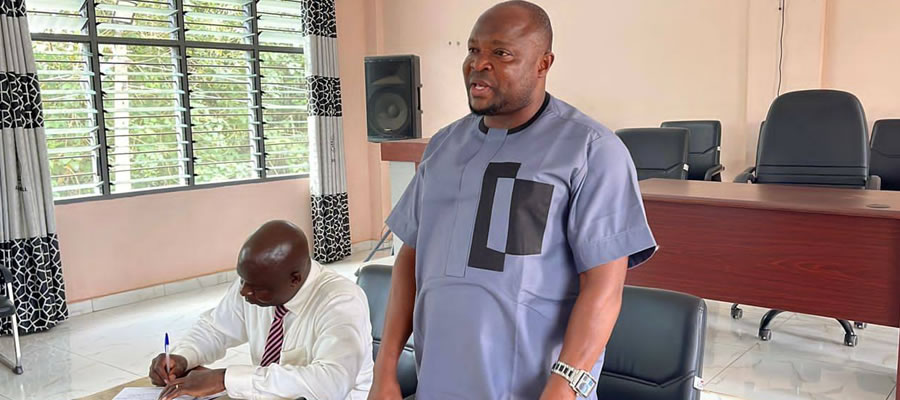

PHYSICAL AND NATURAL ENVIRONMENT
The Akrofuom District is one of the forty-three (43) Districts in the Ashanti Region of Ghana. The District lies within Latitude 40” North and 6 degrees 22” North and Longitude 1 degree West and 1 degree 38” West. It is on the Southern part of the region. Other Districts in the region sharing boundaries with it are Obuasi East, Adansi Asokwa, and Adansi South Districts to the North and North East respectively. Upper Denkyira Municipal. The District has a total land area of 899sq.km. About 24% (334.5sq km) of this total land area is made up of forest reserves.
CLIMATE
The Climatic condition in the District is generally, favourable with mean monthly temperatures ranging between 26 degrees Celsius and 29 degrees Celsius. February and March are the hottest months of the year. The extensive nature of the forest reserves in the District ensures a very good rainfall distribution pattern, which is characterized by two rainy seasons with peak periods around May – June and October. The average annual rainfall figures are between 160 mm and 180mm with an average of 150 rainy days recorded every year.
VEGETATION AND FOREST RESERVES
The Akrofuom District is within the rain forest belt and it is characterized by moist semi-deciduous forest with thick vegetative cover and growth. In some parts of the District, the natural vegetation is steadily degenerating into secondary forest. Relatively, little virgin forest remains outside the main forest reserves and this condition can be attributed to persistent slash and burn methods as well as the incidence of bush fires in the dry season. Despite these improper environmental practices with their detrimental effects on the vegetation of the District, forest reserves still exist and they cover approximately 188sq.km of the total land area of the District.
The Forestry Services Division of the Forestry Commission continues do its work in the District. The district has Eight (8) Forest Reserves namely; Onuem Nyamebe, Kunsimoa, Cheremoase, Nyamebe Bepo, Afia Shelter Belt, Onuem Bepo, Kototintin, Numia Forest Reserve with a total area of 162.9km2 .
The district overlies rocks of the Tarkwain series. Outcrops of porphyry dykes have been observed. According to the classification of Ghana Forest Soils, the District falls within the Ochrosol – Oxysol intergrades. These characteristics have given support for the Celtis-Triplochiton Association, making such species the most predominant tree species with their close families. Other species found are Ceiba spp Piptadeniastrum spp, Aningeria spp, Antiaris Spp, Cylicodiscus spp, Aningeria spp and Khaya Spp.
The variety of species makes timber productions rife in the District with an average output of 9,000 cubic meters of wood annually to service both the local and export markets.
Date Created : 1/31/2019 5:04:05 AM












 facebook
facebook
 twitter
twitter
 Youtube
Youtube
 +233 593 831 280
+233 593 831 280 0800 430 430
0800 430 430 GPS: GE-231-4383
GPS: GE-231-4383 info@ghanadistricts.com
info@ghanadistricts.com Box GP1044, Accra, Ghana
Box GP1044, Accra, Ghana